What Is the Alphabetic Principle?
This post may contain affiliate links. As an Amazon affiliate, we earn from qualifying purchases.
To help your students build a strong foundation to become confident readers and spellers, start with the alphabetic principle! It’s the key to connecting sounds and letters. Learn what the alphabetic principle is, why it matters, and get six simple, effective ways to teach it.
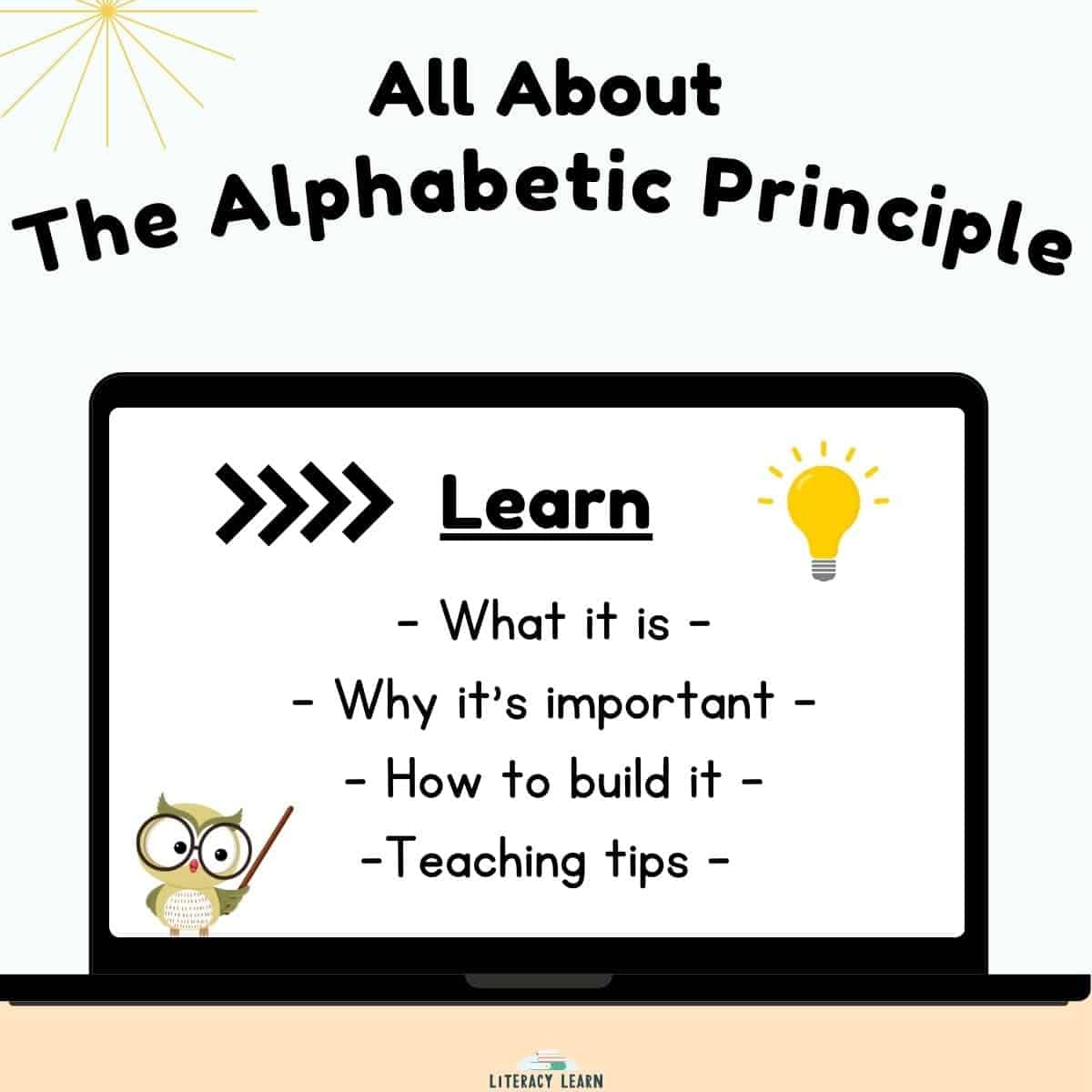
What Is the Alphabetic Principle?
➡️ Academic Definition: The Alphabetic principle is “[t]he concept that letters or groups of letters in alphabetic orthographies (i.e., written systems) represent the phonemes (sounds) of spoken language,” according to the International Literacy Association.
➡️ Simple Definition: Every spoken word is made up of individual speech sounds, and each of those sounds can be represented by a letter or a group of letters from the alphabet.
When students understand the alphabetic principle, they know that words are made up of sounds and that those sounds can be written down using letters. This is a key part of learning to read and spell!
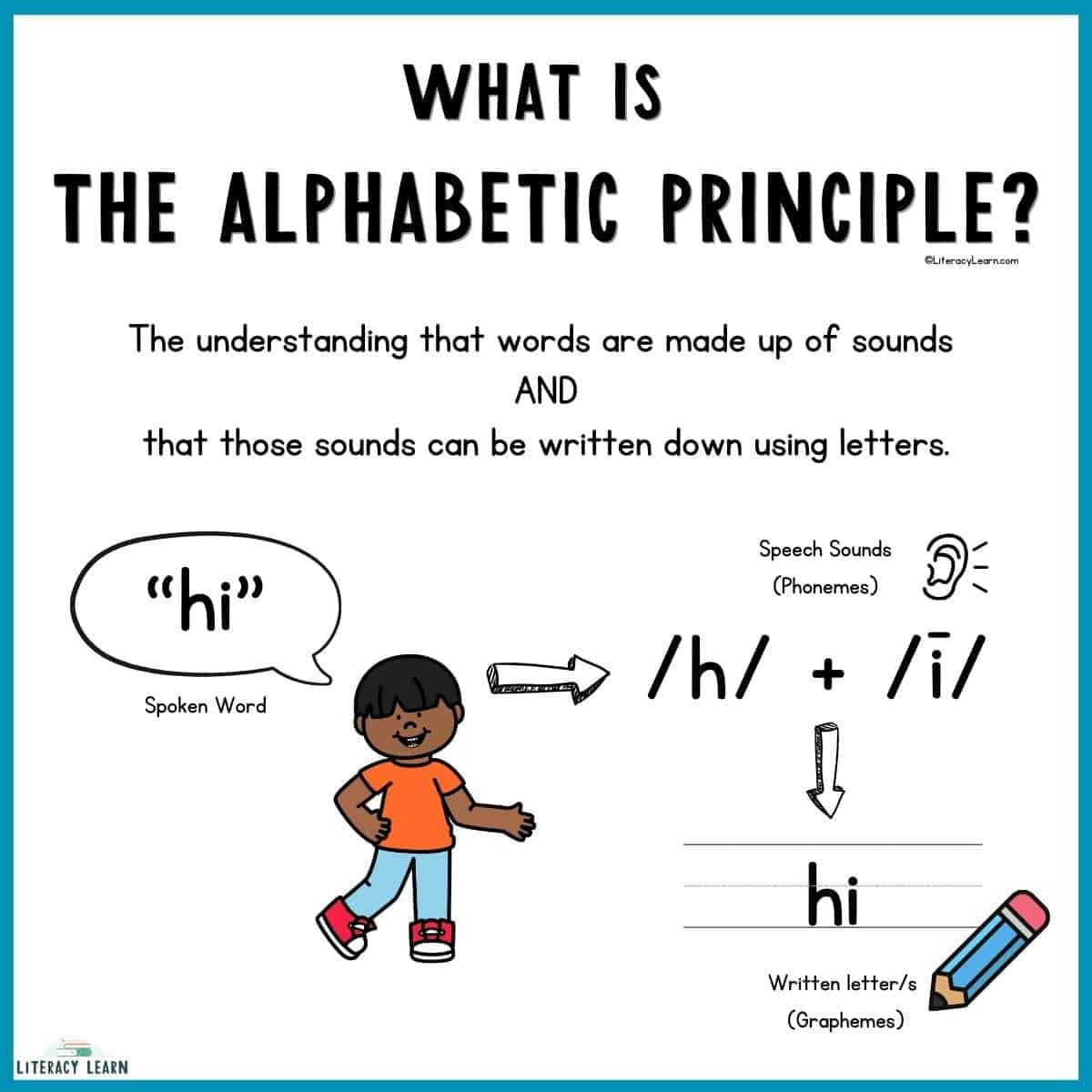
We need kids to both understand this foundational concept AND use it. That’s why we teach phonics! Our ultimate goal in teaching phonics is to enable students to use the alphabetic principle.
Why Is the Alphabetic Principle Important?
Knowledge of the alphabetic principle plays an essential role in teaching beginning readers.
🌟 It’s the foundation of reading and spelling. Understanding that sounds (phonemes) map to letters (graphemes) allows students to decode and encode words accurately.
🌟 It supports word recognition. When kids grasp that letters and sounds have predictable relationships, they have the tools to read and spell unfamiliar words, instead of guessing or memorizing.
🌟 It connects spoken and written language. The alphabetic principle helps bridge the gap between oral language (what we say) and print (what we read and write).
🌟 It builds independence. Students can use their knowledge to read new words on their own, which boosts confidence and fluency.
🌟 It’s essential for future literacy success. Research shows that students who don’t develop this understanding early on often struggle with reading later.
Helpful Teaching Strategies
There are simple yet powerful ways to build awareness of the alphabetic principle as you plan instruction. Learn six great ways to teach the alphabetic principle in your classroom today!
1. Start with the Sound
When teaching a new letter, begin by introducing the sound it makes. For example, say, “Today we’re going to learn the /b/ sound.”
Ask students if they’ve heard that sound before and what words they know with /b/ in them. Using your sound wall, talk about how the mouth moves to make the /b/ sound, and let them practice it in a mirror.
Try this using the sound on its own and in the words they came up with.
Once you’ve introduced the sound, show them the letter. Hold up your phonogram card and say, “This is the letter B. The letter B spells the /b/ sound.” Finally, add the grapheme card ‘b’ to your sound wall.
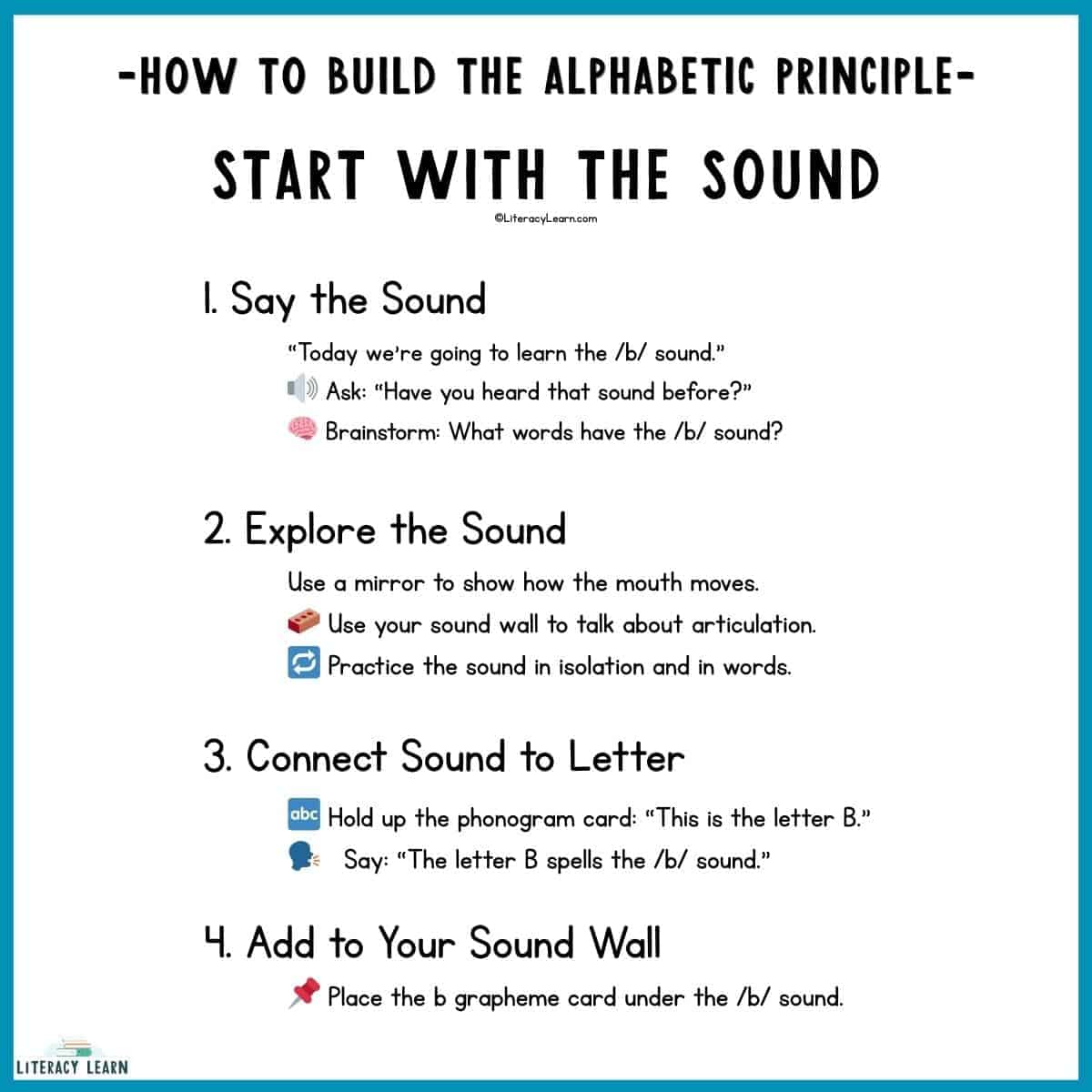
2. Use Letters with Phonemic Awareness Activities
Lots of research, including the NRP (2000) and a recent meta-analysis (2024), states that students benefit from a limited number of auditory-only drills, with the average being about 10 hours.
After that, most students continue to make progress with these skills when connected with letters. Research also says that using embedded mnemonics helps students learn letter-sound connections faster.
By incorporating letters with phonemic awareness instruction, you’ll build your students’ knowledge of the alphabetic principle.
We have a whole blog post on this topic, because it’s just so important! Read our article on Phonemic Awareness Activities with Letters for lots of great information and ideas for implementation.
3. Use a Spelling Procedure that Encourages Segmenting
Here’s a step-by-step procedure that encourages phoneme isolation (segmenting), ensuring that kids represent every sound they hear in a word:
- Say the Word: Teacher says the target word clearly: (“pet“) Students repeat the word aloud. (“pet“)
- Segment the Sound: Students segment every sound heard in the word, drawing a sound line for each sound. (/p/ /e/ /t/ = _ _ _ )
- Match Sounds to Letters: Students writes one letter or letter group (grapheme) for each sound on the sound lines: (p e t)
- Check the Word: Students check to see if every phoneme has a corresponding grapheme. Then they blend the sounds together to read the word. (/p/ /e/ /t/ = “pet” )
Like any routine, it’s important you clearly model this and follow the same procedure each time to encourage consistency and automaticity.
This procedure will translate as kids learn to spell more difficult words, including multisyllabic words. Visit our article about effective spelling strategies to learn more!
4. Teach Kids the Differences between Sounds & Letters
It might seem basic, but it’s essential. When you ask students, “What sound do you hear at the beginning of ‘big’?” and students answer “B,” they’re giving the letter name—not the sound.
Gently correct them: “B is the letter, but I asked for the sound. Who can tell me the sound?”
Kids must learn to distinguish between letters (the symbols) and sounds (the speech). Yes, they’re certainly connected, but this distinction is key to understanding the alphabetic principle.
A small tweak in your language can make a big difference in their learning.
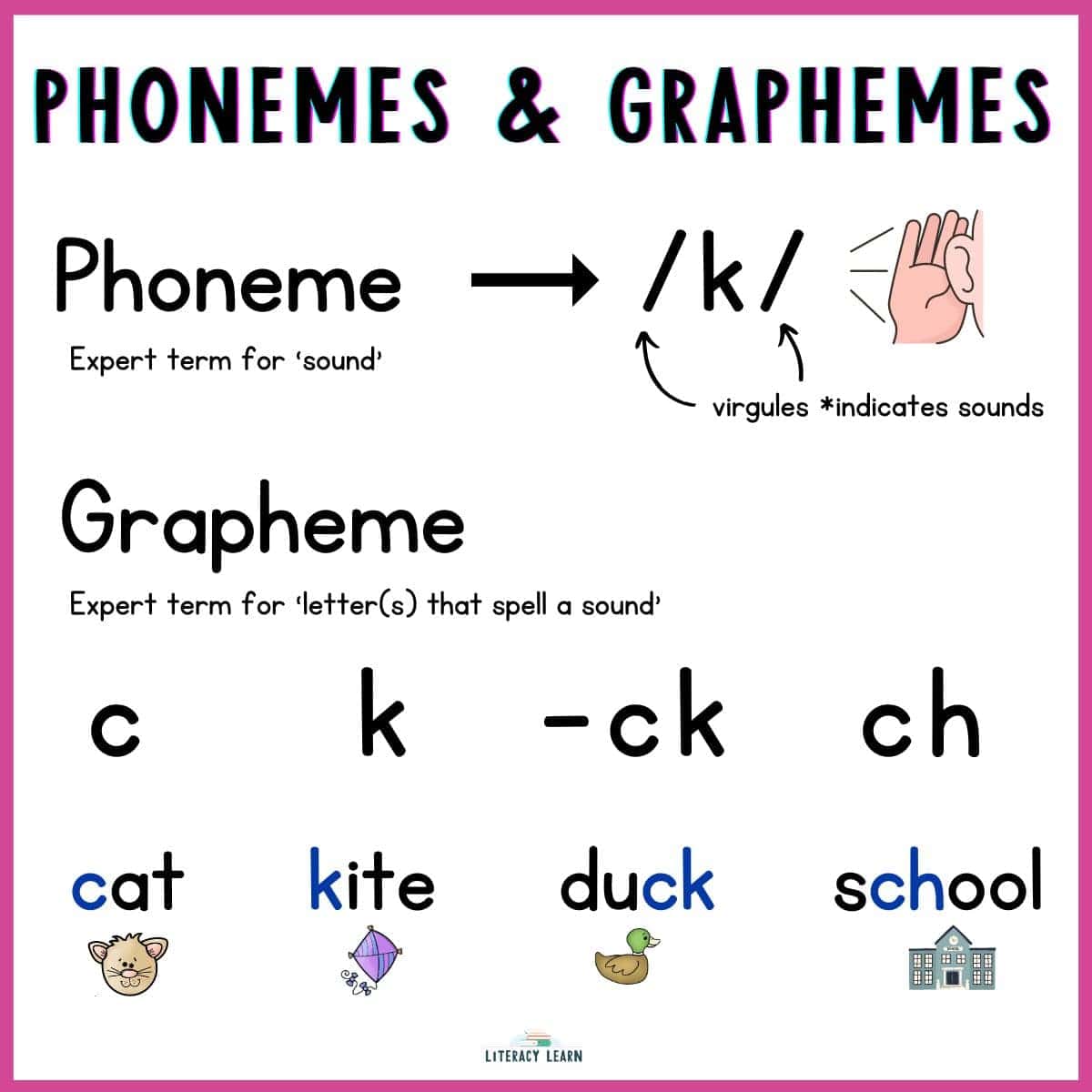
5. Use Invented Spelling
When young children are learning to spell, they often use invented spelling by writing words the way they hear them.
For example, a child might write “fnd” for “friend” or “mp” for “map.” They’re applying what they know about sounds AND letters with the phonics knowledge they currently have.
“Learning to spell is not a matter of memorizing words, but a developmental process that culminates in a much greater understanding of English spelling than simple relationships between speech sounds and their graphic representations.” – Charles Read
6. Create Sound-Letter Routines
A 3-part drill is a quick routine that will allow kids to build their knowledge of the alphabetic principle. You can practice this daily using phonogram cards and a blending board.
Daily practice is essential:
- Visual: Using a phonogram card deck, the teacher shows the grapheme and students say the sound.
- Auditory: The teacher says a sound, and the student writes the grapheme that represents the sound.
- Blending Board: Using connected phonation, students practice blending sounds together to pronounce words.
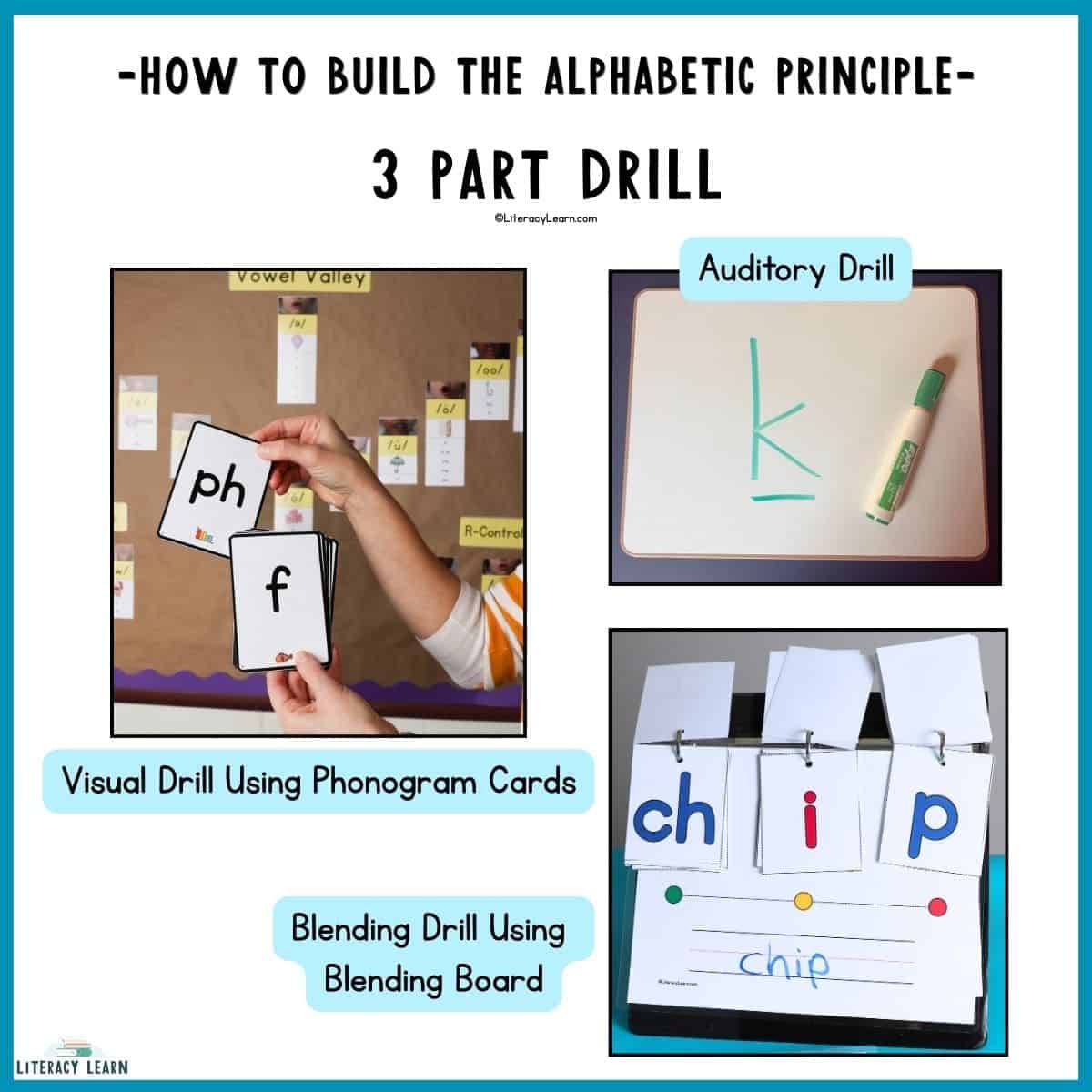
References:
Read, C. (1975). Children’s categorization of speech sounds in English (NCTE Committee on Research Report No. 17). National Council of Teachers of English. https://eric.ed.gov/?id=ED112426
Erbeli, F., Rice, M., Xu, Y., Bishop, M. E., & Goodrich, J. M. (2024). A meta-analysis on the optimal cumulative dosage of early phonemic awareness instruction. Scientific Studies of Reading, 28(4), 345–370. https://doi.org/10.1080/10888438.2024.2309386

